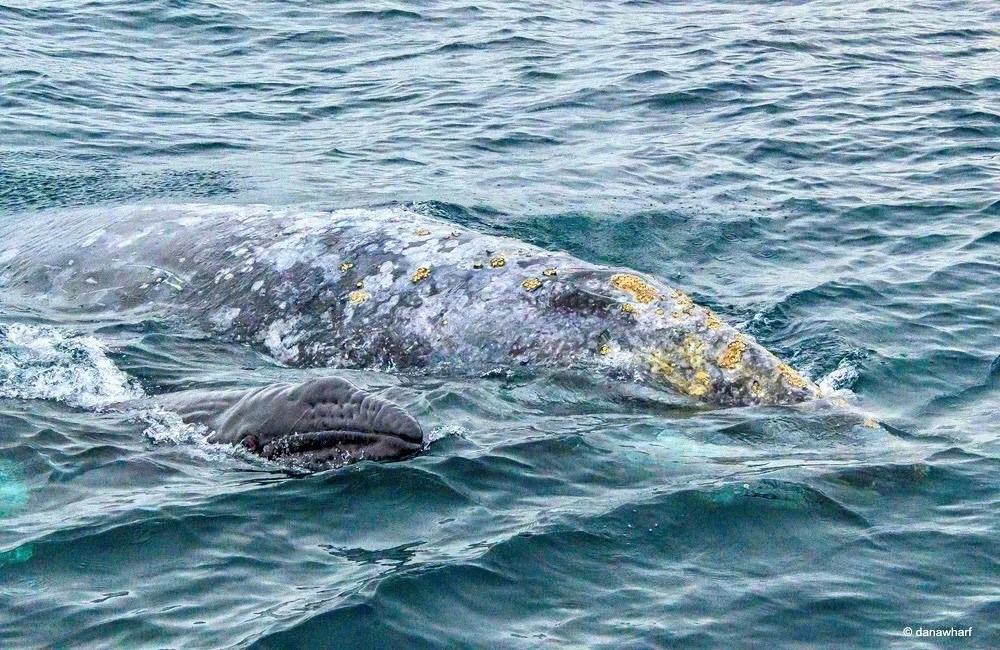Unveiling the Enormity of Baby Whales

Whales are known for their massive size, with some species reaching lengths of over 100 feet and weighing up to 200 tons. But have you ever wondered how big baby whales are? In this article, we will explore the size of baby whales and compare them to their adult counterparts.
How Big Are Baby Whales?
The size of baby whales varies depending on the species. Some species, like the blue whale, give birth to calves that are already quite large, while others, like the beluga whale, give birth to smaller calves.
Blue Whale
The blue whale is the largest animal on Earth, with adults reaching lengths of up to 100 feet and weighing up to 200 tons. Despite their massive size, blue whale calves are born at an average length of 25 feet and weigh around 3 tons. This may seem large, but it is only a fraction of their adult size.
Beluga Whale
The beluga whale is a smaller species, with adults reaching lengths of up to 18 feet and weighing up to 3,500 pounds. Beluga whale calves are born at an average length of 5 feet and weigh around 150 pounds. This is significantly smaller than their adult size, but still quite large compared to other marine mammals.
Humpback Whale
Humpback whales are known for their acrobatic displays and beautiful songs. Adults can reach lengths of up to 50 feet and weigh up to 40 tons. Humpback whale calves are born at an average length of 13 feet and weigh around 1 ton. This is still quite large compared to other animals, but only a fraction of their adult size.
Whale Size Chart
To better understand the size of baby whales, let’s compare them to their adult counterparts. Below is a chart showing the average lengths and weights of various whale species at birth and as adults.
- Blue Whale | 25 feet | 100 feet | 3 tons | 200 tons
- Beluga Whale | 5 feet | 18 feet | 150 pounds | 3,500 pounds
- Humpback Whale | 13 feet | 50 feet | 1 ton | 40 tons
- Sperm Whale | 13 feet | 50 feet | 1 ton | 40 tons
- Killer Whale | 8 feet | 26 feet | 400 pounds | 12,000 pounds
As you can see, even the smallest baby whales are still quite large compared to other animals.
How Do Baby Whales Grow?
Whales are known for their rapid growth rate, with some species growing up to 200 pounds per day during their first year of life. This is due to their high-fat milk, which is essential for their growth and development.
Whales also have a unique growth pattern, where they grow in spurts rather than continuously. This means that they will have periods of rapid growth followed by periods of little to no growth.
Dana Wharf Whale Watching
One of the best ways to see baby whales in their natural habitat is through whale watching tours. Dana Wharf Whale Watching, located in Dana Point, California, offers year-round whale watching tours where you can see a variety of whale species, including blue whales, humpback whales, and more.
Their experienced captains and crew will take you on a journey to see these magnificent creatures up close and personal. You may even be lucky enough to see a baby whale swimming alongside its mother.
The Importance of Protecting Baby Whales
It is crucial to protect baby whales and their habitats to ensure the survival of these magnificent creatures. Whales play a vital role in the ocean’s ecosystem, and their decline could have devastating effects on the environment.
One of the biggest threats to baby whales is entanglement in fishing gear. This can lead to injuries, infections, and even death. It is essential for fishermen to use whale-safe gear and for governments to implement regulations to protect these animals.
